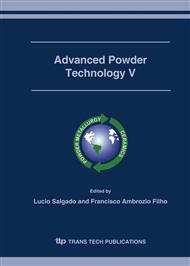p.65
p.72
p.78
p.85
p.92
p.99
p.105
p.111
p.117
Improvements in P/M Green Strength using Micronized Cellulose Particles (MCP)
Abstract:
New P/M lubricant formulations implement micron-sized (“micronized”) cellulose particles (MCP) to create MCP-enhanced lubricants. Surprising increases in green strength, up to 70% for iron and even higher for stainless steel are obtained with standard transverse rupture bars shapes made with 0.75 wt-% additive concentrations in iron (MPIF F-0000) and 316L stainless steel powders in comparison with the same parts made under the same conditions with industry standard lubricantbinders of zinc stearate, ethylene-bis-stearamide (EBS), and oxidized polyolefin (OP) wax. Two specific forms of new MCP materials are used in these tests: micronized cotton fibers (MCF), and micronized starch particles (MSP). The findings support expectations of significantly increased process yields for green parts and related production cost savings.
Info:
Periodical:
Pages:
92-98
Citation:
Online since:
November 2006
Authors:
Price:
Сopyright:
© 2006 Trans Tech Publications Ltd. All Rights Reserved
Share:
Citation:


